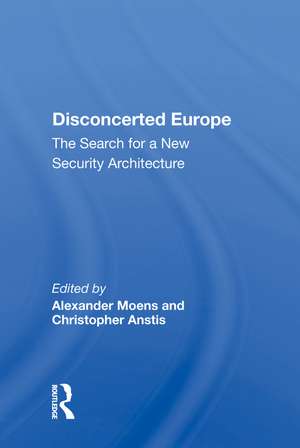Disconcerted Europe: The Search for a New Security Architecture
Editat de Alexander Moensen Limba Engleză Hardback – 7 iun 2019
Preț: 222.32 lei
Preț vechi: 266.20 lei
-16% Nou
Puncte Express: 333
Preț estimativ în valută:
42.54€ • 44.57$ • 35.26£
42.54€ • 44.57$ • 35.26£
Carte tipărită la comandă
Livrare economică 08-22 aprilie
Preluare comenzi: 021 569.72.76
Specificații
ISBN-13: 9780367009403
ISBN-10: 0367009404
Pagini: 286
Dimensiuni: 149 x 222 mm
Greutate: 0.45 kg
Ediția:1
Editura: Taylor & Francis
Colecția Routledge
Locul publicării:Oxford, United Kingdom
ISBN-10: 0367009404
Pagini: 286
Dimensiuni: 149 x 222 mm
Greutate: 0.45 kg
Ediția:1
Editura: Taylor & Francis
Colecția Routledge
Locul publicării:Oxford, United Kingdom
Cuprins
Preface -- Institutional Context -- European Security and Defense Cooperation During the Cold War -- The Formative Years of the New NATO: Diplomacy from London to Rome -- The European Community and Western European Union -- The Conference on Security and Cooperation in Europe (CSCE) -- The Role of the Major Powers -- Not What They Wanted: American Policy and the European Security and Defence Identity -- The United Kingdom -- German Security Policy in the New European Order -- France -- Conclusion -- Failures of the First Round and a Proposal for a New Strategy -- Annex
Descriere
Four years after the end of the Cold War, the United States and its European allies have still not agreed on a new security system to deal with war in Yugoslavia, a restless eastern Europe, and an unstable Russia. The contributors to this timely volume evaluate reforms in the North Atlantic Alliance, the new European Union, and the Conference on Security and Cooperation in Europe (CSCE). They also explore a number of critical issues: Why is it that NATO cannot end the Yugoslav conflict? Why do the Americans and West Europeans quarrel over a European Security and Defense Identity? Why is it that the states of Central and Eastern Europe cannot simply join NATO? Is the CSCE becoming the pan-European security organization that will bear responsibility for preventing or managing future conflicts? The book offers careful analysis of the pivotal years of reform between 1989 and 1992. In the first section, the contributors assess those developments from the viewpoint of the key institutions—NATO, CSCE, the European Union, and its security arm, the Western European Union (WEU). They then examine the policies of the key allies—the United States, the United Kingdom, Germany, and France. The book concludes that the current problems in European security affairs are directly explained by the discord, divergences, and contradictions that have characterized the crucial formative years of these newly significant organizations. In the closing chapter, the editors suggest pragmatic political initiatives for strengthening these groups in the near future.
